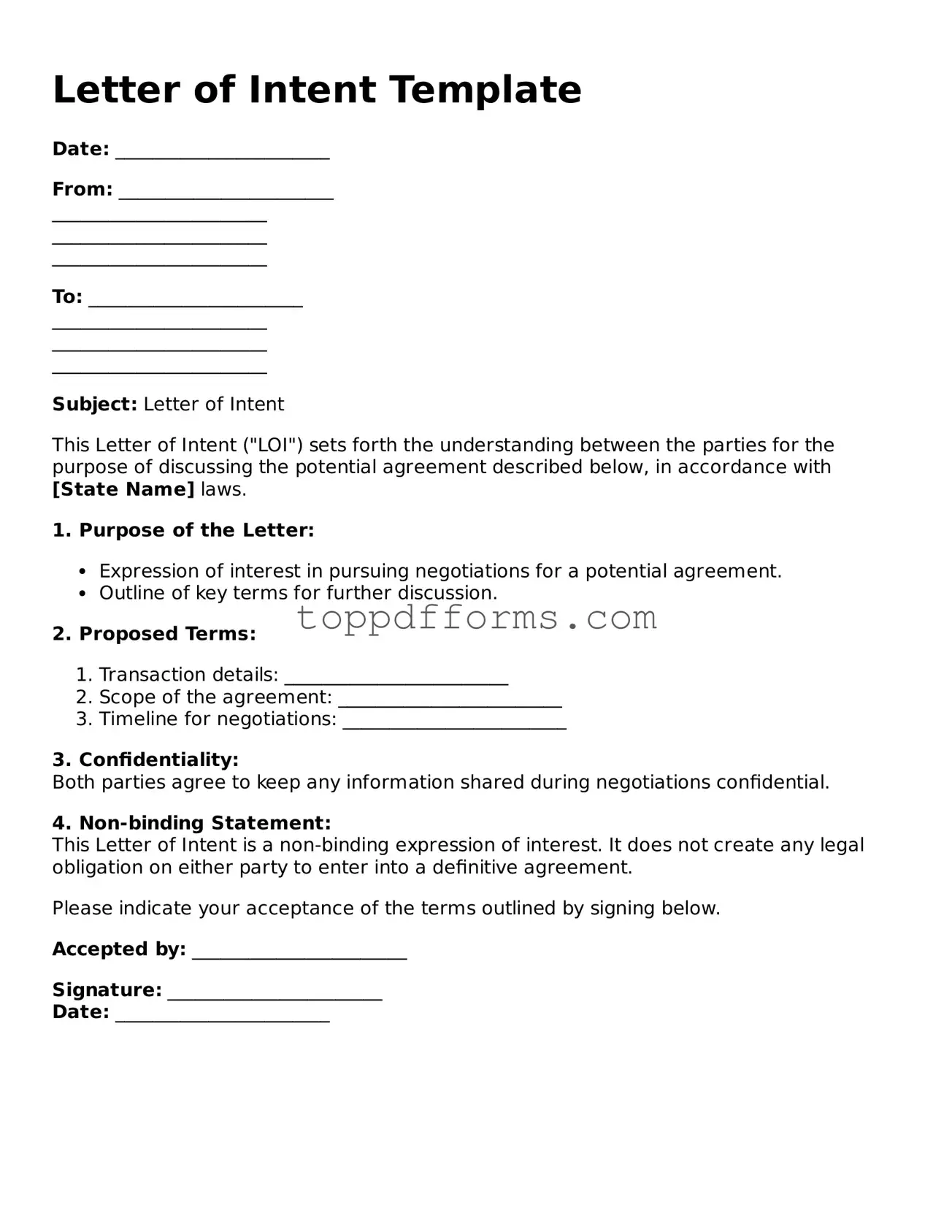What is a Letter of Intent?
A Letter of Intent (LOI) is a document that outlines the intentions of one party to engage in a business transaction or agreement with another party. It serves as a preliminary agreement that sets the stage for future negotiations. While it is not legally binding, it expresses a commitment to move forward and can include essential terms such as timelines, conditions, and the scope of the proposed agreement.
When should I use a Letter of Intent?
An LOI is typically used when two parties are interested in entering into a more formal agreement, such as a merger, acquisition, or partnership. It can help clarify the intentions and expectations of both parties before investing time and resources into drafting a detailed contract. Utilizing an LOI can also help identify potential issues early in the negotiation process, allowing for smoother discussions moving forward.
What should be included in a Letter of Intent?
A well-structured LOI should include several key elements. These may consist of the purpose of the agreement, the parties involved, a description of the proposed transaction, timelines for completion, confidentiality clauses, and any conditions that must be met before finalizing the agreement. It is also advisable to outline any exclusivity arrangements and the duration of the LOI itself.
Is a Letter of Intent legally binding?
Generally, a Letter of Intent is not legally binding, meaning that it does not compel either party to follow through with the proposed agreement. However, certain sections of the LOI, such as confidentiality or exclusivity clauses, may be enforceable. It is crucial to clearly state which parts of the LOI are binding and which are not to avoid misunderstandings between the parties involved.
